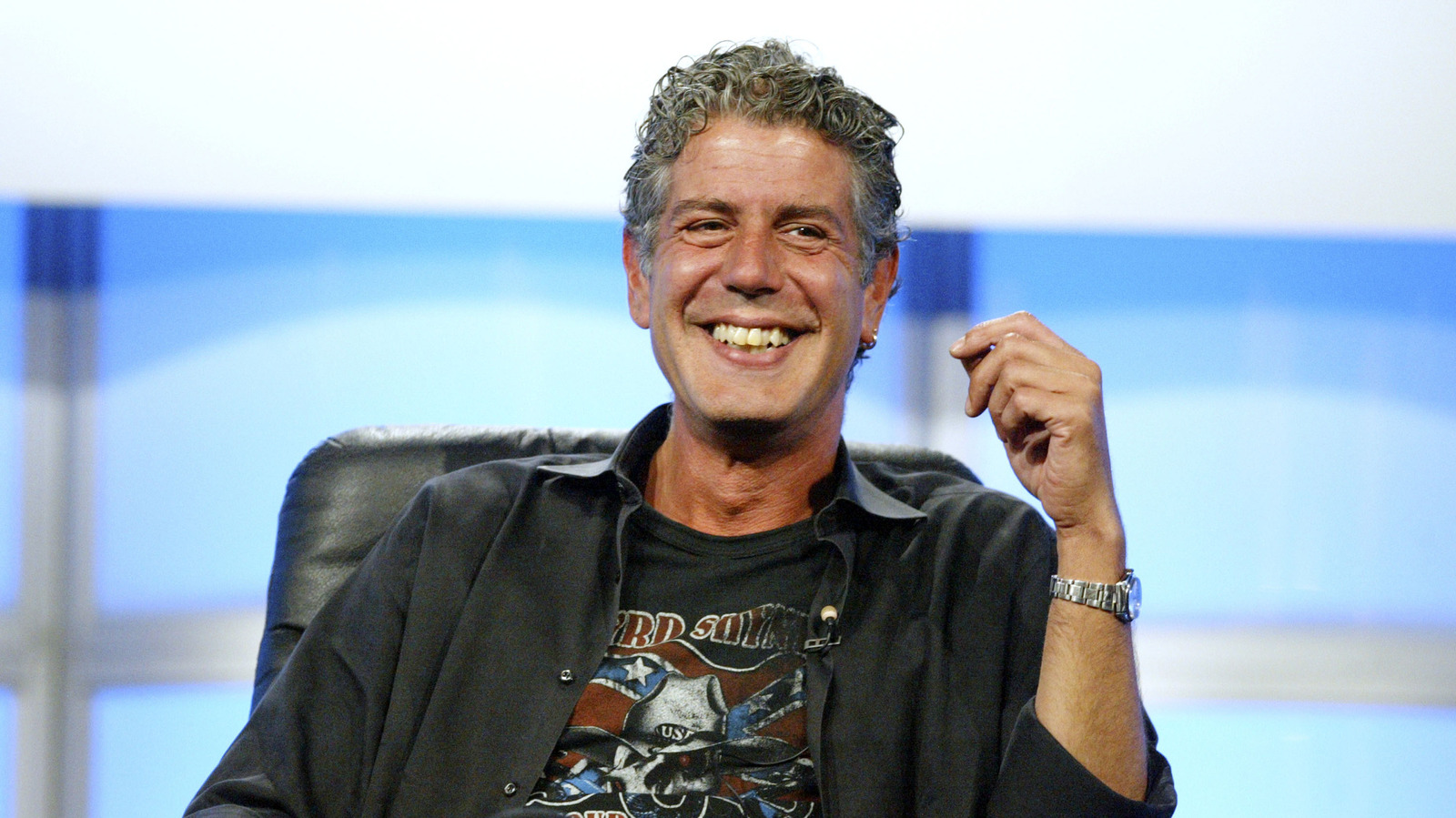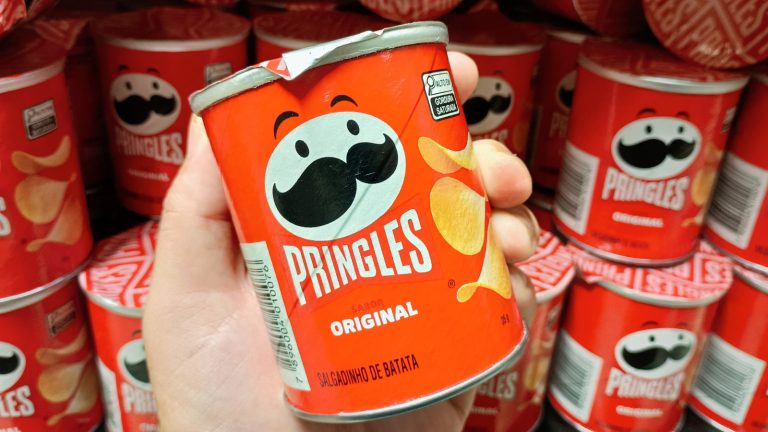We may receive a commission on purchases made from links.
Anthony Bourdain traveled a relentless 250 days a year for over 16 years while filming for his food shows. It’s safe to say that in that amount of time he tried a lot of new foods. The average person, though, is more interested in the highlights — what were the most memorable dishes he had in his career? Across his books and TV shows, there are a few dishes that stand out above the others. Places he visited and revisited, and dishes he would fly to other cities to just for a taste in their authentic environment again.
When Bourdain left the kitchen after the success of his hit book, “Kitchen Confidential,” he started out on a journey to find the best meal in the world. But he knew that the best meals rarely came from the fanciest restaurants or use the most expensive ingredients. His focus was often on food made in casual environments without too much fanfare and embellishment. In his book, “A Cook’s Tour” he explains: “I know how important factors other than technique or rare ingredients can be … context and memory play powerful roles in all the truly great meals in one’s life.”
A lot of these dishes, with just a few exceptions, are both affordable and accessible through recipes that Bourdain himself made public in his cookbooks. Coming from working class roots, the theme of his creative work was always to bridge gaps across cultures through food, which is evidenced by the dishes he raved about.
Bún bò Huế
Fans of Anthony Bourdain’s work know that Vietnam was a special place to him. More than one of the famed chef’s favorite dishes originate from this beautiful Southeast Asian country, which he describes as one of his “favorite places on earth to visit.” There’s no shortage of delicious food in Vietnam, and bún bò Huế may just sit at the top of the list.
This hot noodle soup originates from the gastronomy capital of Vietnam — Huế, which is also where the famous salt coffee was created. The dish, which Tony describes as a “more highly testosterone version of pho” in his book “Medium Raw,” is made with rice noodles submerged in a broth and piled high with a variety of meats. The broth is bright, fishy, and spicy, lightening the heaviness of hunks of congealed blood, slices of beef, and pork patties. On the side, a basket of herbs and lettuce, typical of many Vietnamese dishes, that you can add in at your own will.
If you’re not familiar with congealed blood, the texture (or the knowledge of what it is) may be a bit off-putting, but it was the opposite for Bourdain. “I would definitely bring a date for this,” he says in “Parts Unknown.” “Because if she doesn’t like this, there’s no hope of a relationship. If she said, ‘Oh, I don’t know, there’s blood and icky stuff in there,’ that would be a relationship-ender to me. I’m not kidding.”
Bone marrow from St. John
St. John is a trend-setting English restaurant made famous by the ingenuity of Chef Fergus Henderson. He’s garnered a cult-following and had a massive effect on the food industry by leading the charge in nose-to-tail cooking. If you, like so many other people, enjoy scooping out delicious roasted bone marrow and smearing it over a hunk of grilled bread, then you have Chef Henderson to thank for making this once unheard of, now-prized ingredient a common appetizer.
Bourdain described St. John as being “maybe [his] favorite restaurant in the world” and proudly told the story of getting down on his knees and bowing to the kitchen after finishing his first meal there. In “A Cook’s Tour” he waxed poetic over just how infatuated he was with that bone marrow dish. “Angels sing, celestial trumpets … six generations of one’s ancestors smile down from heaven. It’s butter from God.”
The roasted bones are served at St. John with a simple parsley and caper salad, garnished with croutons and sea salt, perfectly designed to cut through the richness of the beefy spread and add a flash of vibrancy. The restaurant will forever be remembered as the starting ground for an iconic and greatly admired dish, as well as a true homage to English cooking. Bourdain was such a fan of the bone marrow, he said in an interview that this dish would be his hypothetical choice for a “last supper.”
A mortadella sandwich
The concise, uncomplicated mortadella sandwich is considered by some to be Tony’s signature dish (although he didn’t become infatuated with it until after his cooking career had transitioned into television). He discovered his love for the sandwich in São Paulo, Brazil. Stacked impressively high with thinly sliced mortadella and melted cheese, this sandwich is a street food staple in Brazil, made possible and popular by the many Italian immigrants who live there.
Bourdain said in Season 3 of “No Reservations” while visiting São Paulo that snacking on a mortadella sandwich was “always [his] first stop.” Although, after filming the episode, he ran home to recreate it so he could satisfy the craving at home. The recipe is included in his cookbook “Appetites,” and it truly highlights his relatable style of cooking: uncomplicated, filling, delicious.
The mortadella sandwich wasn’t the only sandwich that won rave reviews from Bourdain in his traveling career. Seattle-based Salumi was another all-time favorite of Bourdain’s, which he would’ve liked to see become a UNESCO World Heritage Site for how much he loved their cured meat sandwiches. In the Okinawa episode of “Parts Unknown,” he emphasized his love for the extremely convenient egg salad sandwiches sold in Lawson corner stores pre-packaged and ready to go, and he frequently mentioned his constant cravings for the pastrami sandwich from Pastrami Queen in NYC.
A French omelette
Although he spent the second half of his career primarily exploring the culinary accomplishments of other people’s kitchens, some of Anthony Bourdain’s favorite dishes he spoke of were ones he mastered cooking in his early career as a chef. A good French omelette is one of those dishes that he cooked hundreds, if not thousands of times in his cooking career, and preached as an important technical dish for any cook.
In his book “Medium Raw,” Bourdain quipped on how being able to cook a good omelet should be a requirement for having a sexual partner, so that the more experienced person in the relationship can make a nice breakfast in the morning. He lived up to this dictum himself, as his long time producer and director Tom Vitale describes in his book “In The Weeds” how Anthony made sure to bring his own omelette pan on vacation with his then girlfriend Asia Argento so he could do all the cooking.
If you want to enjoy an omelette the way Bourdain recommended, it’s more about learning to make an omelette yourself than just sitting down and eating it. He described the process as “not just a technique but a builder of character,” and felt that young or old, “everyone should be able to make an omelet.”
Mapo tofu
Bourdain was famous for being quite the carnivore, devouring whole roasted animals and (literally) all of their parts everywhere he went. So, it may come as a surprise that one of his favorite dishes of all time — which even he recognized as being “improbable,” was tofu based.
Although mapo tofu isn’t strictly vegetarian, the tofu is the star of the show. It features a sauce that Bourdain described as “fiery, but intensely satisfying” along with ground pork and steamed tofu. The hearty sauce and chunks of tofu, sometimes accompanied by leeks or mushrooms, are served over rice, the perfect accompaniment for a sauce loaded with flavor. Hailing from the Sichuan region of China, this dish is characterized by the “mala” numbing spice of Sichuan peppercorn, and takes on a unique umami flavor from fermented red beans. Combined with both dark and light soy sauce and sweetened with a bit of sugar, there are layers of flavors to the sauce that make it instantly addictive.
Given the depth of flavor to this dish, it’s unsurprising that Bourdain couldn’t get enough of it when he visited Sichuan, China in Season 8 of “Parts Unknown.” “I just love, love, love this dish,” he proclaimed (although his friend, Chef Eric Ripert of Le Bernardin, found the spice to be a bit overwhelming).
Cacio e pepe
This straightforward, but no less enticing pasta dish was another one featured on his show that you could tell he really, really liked. His exact words from the Rome episode of “No Reservations” were “this could be the greatest thing in the history of the world.” Cacio e pepe simply means cheese and black pepper. The dish is typically made with long noodles like spaghetti, bucatini, or tagliolini in a sauce of butter, fresh cracked black pepper, and pecorino cheese. Simple to make, straight to the point, but absolutely delicious. This is a great example of the style of cooking that characterized Anthony Bourdain’s work.
Initially when he released this episode, Bourdain didn’t disclose the location he ate this incredible dish at, for fear of “killing what he loves” and overwhelming a small local place with lines of tourists. But it was to no avail — soon enough it became public knowledge that the restaurant he had dined at was called Ristorante Roma Sparita, and they now feature a clip of the episode on its website.
The restaurant has one trick to make this three-ingredient dish really pop: there, it’s served in an edible bowl of crispy Parmesan cheese. Relatively simple to execute, and incredibly enjoyable to eat, it’s an intelligent way to make the dish shine.
Bún chả
This dish has been canonized into food TV history as the meal shared by Anthony Bourdain and former President Barack Obama. Squatting on low plastic stools in front of “Parts Unknown” cameras and sharing beers in a small restaurant in Vietnam, the two prominent men shared conversation of fatherhood and ketchup on hotdogs while enjoying hearty bowls of bún chả. The restaurant where they ate, called Bún chả Hương Liên in Hanoi, was never the same after that encounter and now offers up “combo Obamas” (bun cha, fried seafood roll, and a Hanoi beer) to lines of tourists each day.
As is the case with most Vietnamese food, the dish is simple, but packed with flavor. Grilled pieces of pork, kissed with smoke from the grill and marked by flavorful bits of char, are served soaking in a broth of tangy green papaya juice. Sticky rice noodles are dipped into the broth until they relax, and enjoyed along with the classic selection of fresh herbs and lettuces. Bún chả is mentioned more than once across Anthony’s numerous books and TV shows as a dish that he always came back to when visiting Vietnam.
Sukiyabashi Jiro sushi
When asked what he would want to eat for his last meal, St. John wasn’t the only restaurant Bourdain mentioned. In another interview published by The Guardian, Bourdain said that he would love to indulge in sushi from Sukiyabashi Jiro before he goes — perhaps when you eat so much incredible food all the time, it makes picking just one last meal quite a challenge.
He actually ate at this restaurant for his show, but unfortunately Chef Jiro Ono requested that the clip be removed from the episode shortly after it was released. Nevertheless, the original clip is still on YouTube, where Bourdain expresses that it was “easily the best sushi experience of [his] life.” The sentiment was even shared by Bourdain’s one-time dining companion, former President Barack Obama, who ate at the sushi counter and reportedly agreed to it being the best sushi he’d ever had.
Sukiyabashi Jiro was the first sushi restaurant to receive three stars from the Michelin Guide. The service there is characterized by being a rapid succession of 20 small bites, perfectly crafted and served with the utmost care — it should come as no surprise that Bourdain was enamored with the food here, given the level of awards they received.
Blood sausage
Bourdain ate a lot of sausages over his travels, but blood sausage really seemed to take the cake when it came to impressing the traveling chef. While some might shy away from the perhaps frighteningly-colored stuffed tube, Bourdain was always a gleeful fan of the macabre (especially when it came in meat form) and ate it all around the world.
On a trip to Cologne in Season 7 of “Parts Unknown,” he describes getting “deep into [his] happy zone” when the blood sausage hit the table. That particular dish was served with fried onions and mashed potatoes with applesauce. He was always blunt about the loving a dish, and postulated that if “you don’t like it, by the way, it pretty much removes you from my ‘will save if drowning’ list.”
Bourdain ate blood sausage enthusiastically around the globe, including in Vienna, Uruguay, Argentina, and even close to home in the Bronx. It’s a dish that makes good use of animal blood that might otherwise be wasted, and different recipes can be found from many cultures that vary from using pork fat or even rice to thicken the filling and add flavor.
Sarawak laksa
Anthony Bourdain loved a good noodle dish, and this Sarawak laksa drew special attention from him and many return visit to the region he tried it in for its spicy, flavor packed broth. Typically eaten for breakfast, laksa is a noodle dish made in different variations depending on the sauce. Sarawak speaks to a region of Malaysia that this sauce is specific to, and really requires a specific blend of spices to achieve its peak flavor.
Anthony visited the state of Sarawak, Malaysia in Season 1 of “No Reservations,” and quickly fell in love with what he referred to as the “weapons grade plutonium of breakfast.” Given the spice this noodle is packing, it will wake you up in the morning in a similar fashion as a stiff slap to the face. He loved the dish so much, he attempted to recreate it with a recipe published in his cookbook “Appetites,” although he acknowledges it might not come out quite the same as the one he ate in Kuching.
The laksa “gravy” as he calls it is made from coconut, a CVS-receipt-length list of spices, lemongrass, soy sauces, and dark broth. “It’s a masterpiece of pain and pleasure,” he says. If you don’t care to hunt down all the ingredients on your own, try seeking out a true Malaysian restaurant in search of this chef-favorited variation.
Coq au vin
Bourdain’s many years as the chef at Les Halles in New York made him an aficionado of classic French bistro cuisine. Coq au vin is one of those dishes, similar to the omelet, that he had to perfect from cooking it so often. He pulled that recipe out frequently throughout his career, cooking it for Martha Stewart’s show alongside his friend, chef Eric Ripert of Le Bernardin, and including the recipe in his “Les Halles Cookbook.”
In chapter 4 of Tom Vitale’s book “In The Weeds” Bourdain’s longtime producer tells the dramatic story of a behind the scenes moment while filming the Congo episode in which Anthony demands his camera crew butcher live chickens so that he can prepare his classic coq au vin for everyone while floating down a river at night, in a small boat. Under those extenuating circumstances, he had to choose a dish that he was familiar with and knew would satisfy his crew.
Bourdain described this dish as “simple and forgiving” encouraging home cooks to recreate it, as well as other French bistro classics like onion soup or beef bourguignon in his “Les Halles Cookbook.” There’s no better way to reminisce on the late, great chef than by preparing one of his own recipes that he cooked countless times over his career.
Pho
Pho is a Vietnamese classic that is often the first to win over those unfamiliar (or familiar) with Vietnamese cuisine. Its simplicity unearths feelings of warmth and comfort, its textures and customizability making for a personalized experience. Perhaps you start by appreciating the meaty broth on its own, before adding in your preference of vinegar, fish sauce, or slices of brightly colored chilies that quickly transform the broth into something punchy and bright.
In his book “Medium Raw”, Bourdain provides a lengthy and quite vivid comparison of pho restaurants in Vietnam to the filming sets of adult movies. His graphic descriptions and colorful way with words was one of the things that made him a relatable icon not only with chefs but also with the general public, and the comparisons of his favorite foods to sex spoke to just how deep his feelings were for a dish.
A sizable portion of a chapter in “Medium Raw” was dedicated to pho, emblazoning it as one of Anthony Bourdain’s favorite dishes of all time. He even moved beyond the sexual comparisons into a more tender and romantic light, proselytizing that “describing pho as more like love than sex, would be more accurate … it’s an unconditional kind of love.” Although he may have suggested that he enjoyed the more flavorful, meat packed bún bò Huế over pho, it was clear that this Vietnamese classic would always hold a place in his heart. “Some things never get old,” he says, “some things are just classic … I feel exactly like this with Hanoi-style pho.”





